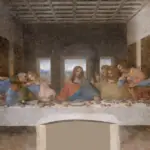Sandro Botticelli, a prominent figure of the Early Renaissance, was an Italian painter known for his captivating works that continue to enchant art lovers and historians alike.
Born Alessandro di Mariano di Vanni Filipepi around 1445 in Florence, Italy, Botticelli rose to fame for his graceful depictions and intricate details.
His masterpieces, including “The Birth of Venus” and “La Primavera,” capture the essence of Renaissance ideals and the beauty of mythological storytelling.
During his lifetime, Botticelli’s art reached immense popularity, particularly his elegant portrayals of the Madonna and child and his impressive altarpieces.
As a master of mythological scenes, works like “Venus and Mars” cemented him as one of the most esteemed artists in Italy at the time.
Despite a period when his reputation dwindled, Botticelli’s influence and recognition have reemerged, placing him among the greats of the Renaissance.
Botticelli’s unique style, characterized by its flowing lines and delicate features, offers a window into the cultural and artistic currents of Renaissance Florence.
His personal life and career were intricately tied to the Medici family, which allowed him to create art that would speak to generations.
Discover how Botticelli’s works, through their interplay of mythology, religion, and innovation, reflect the spirit of an era defined by creativity and change.
Early Life and Training
Sandro Botticelli, a notable figure of the Early Renaissance, was shaped by his upbringing in Florence and early artistic education under renowned mentors.
Family Background
Botticelli, born in 1445 in Florence, was the son of Mariano di Vanni Filipepi, a tanner. The family was part of the artisan class and lived in a busy city known for its cultural and economic importance.
Being in Florence, Botticelli was surrounded by the vibrant atmosphere of art and trade.
The family’s strong ties to the community likely provided him with many opportunities. As he grew up, his nickname “Botticelli,” meaning “little barrel,” was derived from an older brother’s nickname, reflecting familial connections.
Though not much is known about his early childhood, his environment in Florence’s bustling artistic community significantly shaped his path as an artist.
Artistic Training
Botticelli began his artistic training at age 15 under Fra Filippo Lippi, a respected painter of the time.
Lippi’s workshop offered a nurturing environment in which Botticelli learned the techniques and styles of Renaissance art. This training included studying drawing and painting and developing a keen understanding of the human form and use of color.
Lippi’s influence is evident in Botticelli’s early works, as he mastered the flow and grace characteristic of Lippi’s style.
Botticelli also absorbed other techniques from his contemporaries, which enhanced his skills and allowed him to become one of Florence’s most celebrated artists.
The rigorous training he received solidified the foundation for his later masterpieces, such as “The Birth of Venus” and “Primavera”.
Botticelli’s Masterpieces
Sandro Botticelli’s paintings are renowned for their elegance and intricate details. His works often combine mythology and religious themes with a graceful style.
The Birth of Venus
“The Birth of Venus” is one of Botticelli’s most celebrated paintings. It depicts the goddess Venus emerging from the sea on a shell. Mythological figures, including Zephyr and Chloris, surround her.
The use of soft lines and pastel colors creates a serene atmosphere. This masterpiece, housed in the Uffizi Gallery, reflects beauty ideals during the Renaissance.
It plays a crucial role in art history, marking a shift towards more humanistic and secular themes.
Primavera
“Primavera” is another iconic work by Botticelli. This painting illustrates a scene filled with mythological figures in a lush garden. Venus stands at the center, overseeing the arrival of spring.
To her left, the Three Graces dance while Mercury dispels clouds. On the right, Flora scatters flowers as Chloris transforms.
The painting is full of symbolism, representing themes of rebirth and fertility. This masterpiece captivates viewers with its rich detail and vibrant colors, making it a staple of Renaissance art.
Mars and Venus
“Mars and Venus” presents a whimsical scene of the two mythological figures in a quiet moment. Venus, the goddess of love, watches over the asleep Mars.
Satyrs play with Mars’s armor to symbolize playful mischief in love. This work contrasts calm and chaos, reinforcing the theme of love’s victory over war.
” Mars and Venus, ” currently held at the National Gallery in London, is admired for its unique storytelling and delicate execution. Botticelli masterfully explores the balance of love and power in this piece.
Adoration of the Magi
The “Adoration of the Magi” showcases Botticelli’s skill in depicting religious themes. The painting includes members of the Medici family, reflecting his connection to powerful patrons.
The scene is rich with emotion and intricate details, capturing the moment the Magi present gifts to the baby Jesus.
The perspective draws the viewer’s eye to the central figures, enhancing the sense of depth. This work remains a remarkable example of Botticelli’s ability to blend sacred and historical elements in his art.
Madonna of the Magnificat (Virgin and Child, and Angels)
“Madonna of the Magnificat” features the Virgin Mary with the Christ child, encircled by angels.
She is shown writing the Magnificat, a hymn of praise that highlights her spiritual wisdom. Botticelli uses a circular format known as a tondo, which enhances the sense of harmony and unity in the composition.
The painting is notable for its exquisite detail, especially in its depiction of textiles and jewelry. It exemplifies Botticelli’s mastery of composition and color, making it a treasured piece in the Uffizi Gallery‘s collection.
Artistic Style and Influence
Sandro Botticelli, a prominent figure of the Italian Renaissance, is noted for his distinct artistic style, characterized by elegant compositions and a unique approach to mythological themes. His influence extends from the Renaissance to modern art, reflecting his lasting impact.
Use of Color and Composition
Botticelli’s art is renowned for its vibrant color palette and sophisticated compositions.
He employed rich hues to create a sense of depth and movement, captivating viewers with texture and contrast.
His delicate pastels and glowing skin tones added warmth to his figures, making them look lifelike.
His paintings often combine color and careful linework, giving his subjects a sense of grace and flow.
His balanced compositions are exemplified by works like “The Birth of Venus,” which features flowing lines and harmonious arrangements.
Mythological Themes
Mythological subjects are a hallmark of Botticelli’s oeuvre. He frequently drew inspiration from classical myths, making them accessible to contemporary audiences.
Paintings like “Primavera” and “The Birth of Venus” showcase his fascination with these tales.
His detailed interpretation of myths infused his work with symbolism, often exploring themes of beauty and divinity.
Botticelli skillfully combined storytelling with visual splendor, engaging viewers with familiar stories that are fresh and captivating.
These mythological depictions remain influential in understanding Renaissance perspectives on ancient narratives.
Influence on Renaissance Art
During the Renaissance, Botticelli was pivotal in shaping the era’s artistic direction.
His works reflect a blend of traditional techniques with innovative approaches, influencing many artists of his time.
Figures like Filippino Lippi, whom Botticelli mentored, exemplify his wide-ranging impact on his contemporaries.
His mastery of linear perspective and delicate detail enriched the artistic dialogue among Renaissance artists.
His ability to merge decorative elements with classical themes inspired a generation, creating a lasting legacy.
His contributions helped define the aesthetic values that characterized Florentine art during this period.
Influence on Modern Art
Botticelli’s art resonates within modern culture, influencing diverse artists and art forms.
His compositions and themes remain popular in contemporary reinterpretations and studies.
Modern art often revisits Botticelli’s blend of linear elegance and thematic exploration to craft new dialogues with the past.
His impact isn’t limited to paintings; Botticelli has inspired filmmakers, designers, and illustrators, demonstrating his broad cultural reach.
His works highlight timeless concepts that continue to captivate the imagination, bridging the gap between Renaissance intricacies and today’s artistic expressions.
Patrons and Commissions
Sandro Botticelli was a prominent artist during the Renaissance. His career was largely shaped by his connections with influential patrons, particularly the Medici family and the church. These relationships enabled him to produce some of his most well-known works.
Medici Family
The Medici family was one of Botticelli’s most significant patrons. They were powerful and wealthy, deeply involved in the politics and culture of Florence.
Botticelli received many important commissions from them, which helped cement his reputation as one of the leading artists of his time.
Botticelli’s painting, “Adoration of the Magi,“ features several members of the Medici family. This work provided a political platform to showcase their status and influence.
Botticelli often included members of the influential Medici family in his artwork, reflecting both his skill and their support. This mutual partnership placed Botticelli at the heart of Florence’s artistic community.
Church Commissions
The church was another major patron of Botticelli, reflecting the broader trend where Renaissance art celebrated religious themes.
He was commissioned to create altarpieces and religious frescoes, which enhanced his fame and influence.
One of Botticelli’s significant church commissions was for the frescoes in the Sistine Chapel, undertaken during the late 15th century.
These frescoes feature episodes from the Bible and demonstrate his ability to convey complex narratives in a clear, visual manner.
Church commissions like these reinforced Botticelli’s religious connections and showcased his artistic versatility and skill.
Final Thoughts
Sandro Botticelli remains a central figure in Renaissance art. His works, filled with elegance and depth, inspire art lovers and scholars.
Paintings like “The Birth of Venus” and “Primavera” showcase his unique style and mastery of form and color.
Botticelli’s approach to painting often involved symbolic and allegorical themes.
One example is his piece, the Calumny of Apelles, which is noted for its intricate detail and mythological context. His ability to blend spirituality with art made him distinct.
In his later years, Botticelli’s work reflected Florence’s changing religious climate. More somber tones and themes characterize this period.
Despite this shift, his art remained deeply impactful, continuing to captivate audiences centuries later.
Key Takeaways: Sandro Botticelli’s art is a testament to the cultural and artistic vibrancy of the Renaissance. His works are valuable for their historical, symbolic, and aesthetic significance. Botticelli’s legacy endures, influencing artists and being celebrated worldwide.
Frequently Asked Questions
Sandro Botticelli was an influential artist of the Italian Renaissance. He is known for his detailed and emotive paintings. His works and personal life continue to intrigue art enthusiasts and historians alike.
What was so special about Sandro Botticelli?
Sandro Botticelli is celebrated for his unique style, characterized by flowing lines and graceful figures. He mastered mythological themes, as seen in paintings like “The Birth of Venus.” His contribution to Renaissance art is his ability to blend classical and contemporary elements.
Why was The Birth of Venus controversial?
“The Birth of Venus” was controversial because it depicted Venus, the goddess of love, in the nude. At a time when such imagery was rare, this bold portrayal of mythological figures and divine beauty raised eyebrows. The painting’s symbolism adds to its complexity.
Were Botticelli and Da Vinci friends?
Sandro Botticelli and Leonardo da Vinci worked in Florence during the Renaissance. There is no concrete evidence of a close friendship between them.
They were part of the same vibrant art scene, often influencing each other’s work indirectly. Though not documented in detail, their interactions would have been professional and competitive.
Who was Botticelli in love with?
Little is known about Botticelli’s personal, romantic life. He never married, and no verified records of any romantic relationships exist.
His works often idealized feminine beauty, leading to speculation about muses, but none have been definitively linked to him personally.
Why did Botticelli change his name?
Sandro Botticelli was born Alessandro di Mariano di Vanni Filipepi. He acquired the nickname “Botticelli,” which means “little barrel,” from his older brother. The exact reason for the nickname is unclear, but it stuck with him throughout his career.
What is a Botticelli angel?
A Botticelli angel refers to the cherubic figures depicted with elegance and emotion in his religious artworks. These angels are often noted for their delicate features and ethereal charm. They symbolize the heavenly realms in Botticelli’s paintings.
How did Botticelli change the world?
Botticelli influenced the art world by popularizing mythological subjects in painting. His works helped inspire future artists to explore more expressive and imaginative themes. He also contributed to developing linear perspective and human emotion in art.
How many Botticelli paintings exist?
Sandro Botticelli’s paintings number approximately 150, and many of them are held in major museums around the world. His masterpieces include religious and mythological themes.
What happened to Botticelli?
Botticelli spent most of his life in Florence and died in 1510. He experienced a decline in popularity towards the end of his career. After his death, his works were overshadowed until their rediscovery during the 19th-century Renaissance revival.
What is the masterpiece of Sandro Botticelli?
Sandro Botticelli’s masterpiece is often called “The Birth of Venus.” The painting is renowned for its beauty, intricate detail, and mythological significance. It exemplifies Botticelli’s skill in conveying both motion and emotion through art.
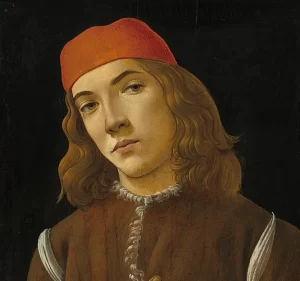
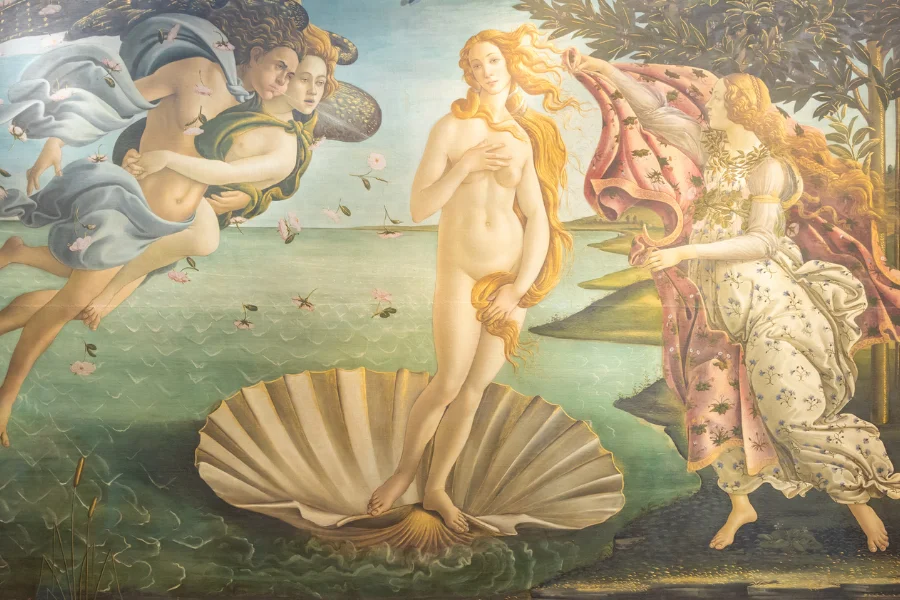
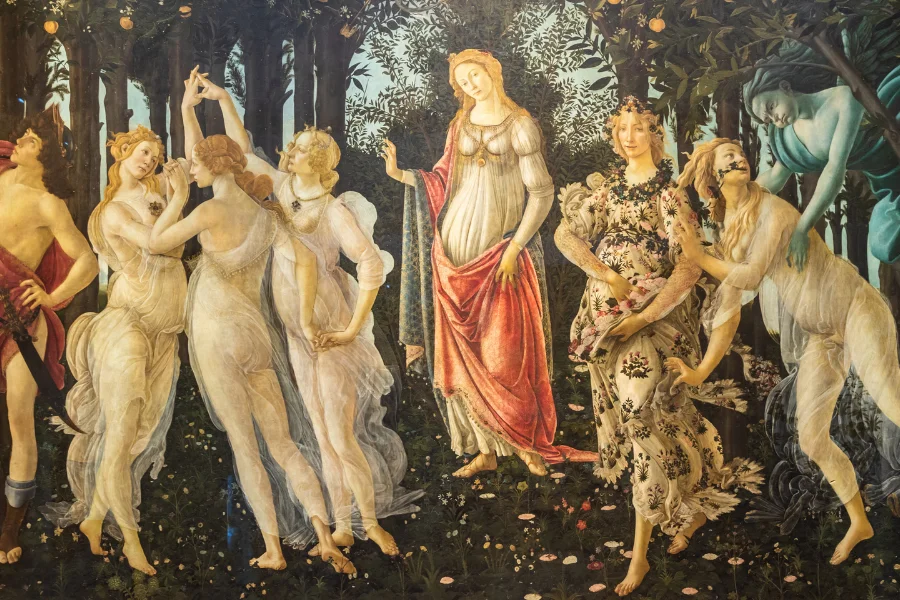
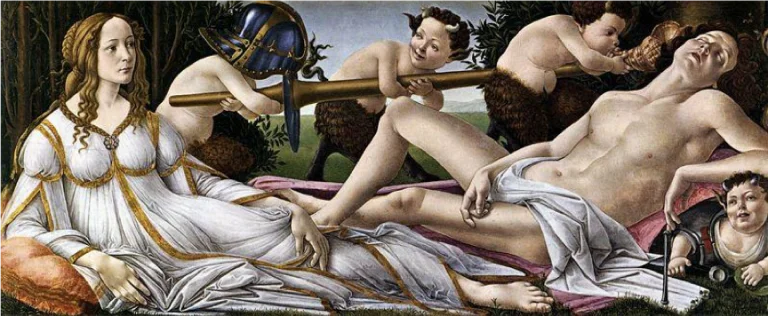

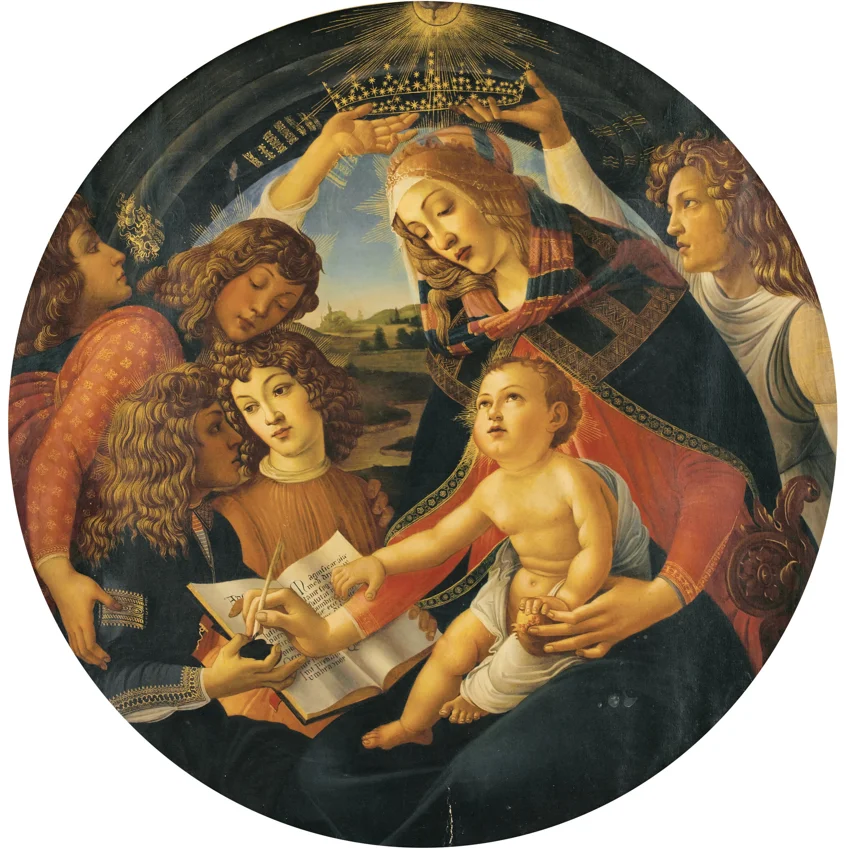
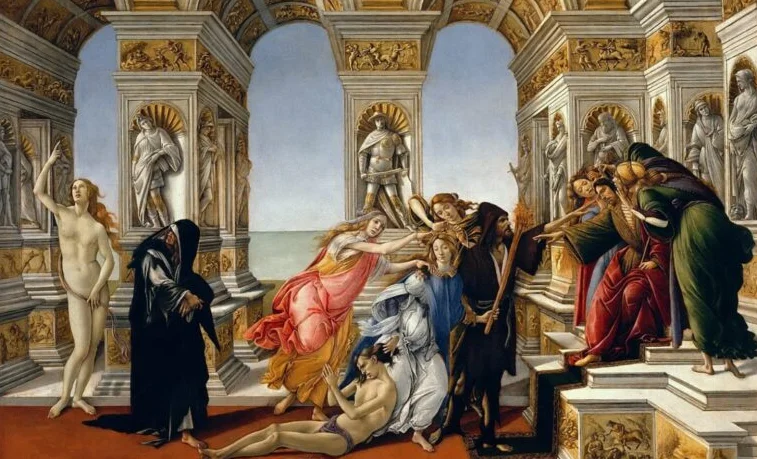
 I’m Leonardo Bianchi, the mind behind Leonardo da Vinci's Inventions. Thanks for visiting.
I’m Leonardo Bianchi, the mind behind Leonardo da Vinci's Inventions. Thanks for visiting. 


